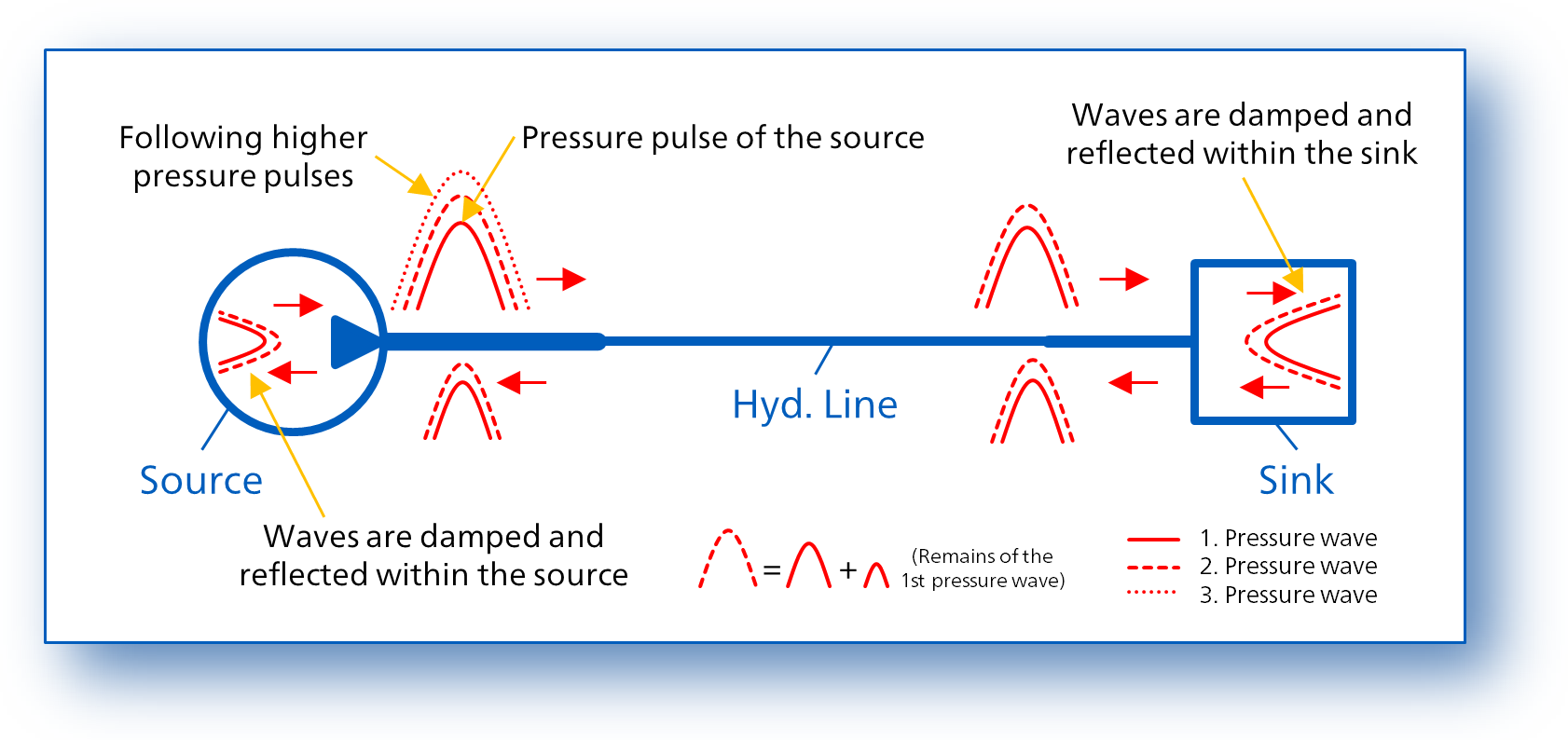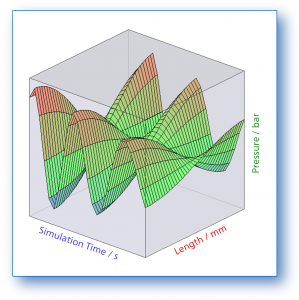From many years of professional experience, RohrLEx knows that every hydraulic system has several relevant natural frequencies, but this does not necessarily result in resonance problems in the system. For resonance problems to occur, the natural frequencies must first be excited. Colloquially, one says that the system resonances must be "hit" (i.e. matched) by the excitation.
Whether or not a pressure oscillation problem occurs in the presence of a "suitable" frequency excitation depends on the system damping, the level of the initial pressure pulsation of the pulsation source (especially in the case of transient processes, e.g. pump startup) and on the position of the excitation.


Ideally, the system damping is large enough such that a pressure wave introduced into the system from the source is completely dissipated on its way through the system and back. Even if the resonance is "hit", there will be no pressure pulsation problem then.
As a rule, however, the pressure pulsation is usually high enough so that the pressure wave is not completely dissipated. To put it simply, a sufficient amount of the pressure wave is still left after travelling through the piping system and returning back to the source. In the resonance case, the pressure pulsation problem takes its course and the amplitudes reach large values within a few cycles.
RohrLEx has created a flyer on the subject of resonances in the piping system in which he explains the cause-and-effect relationships.



